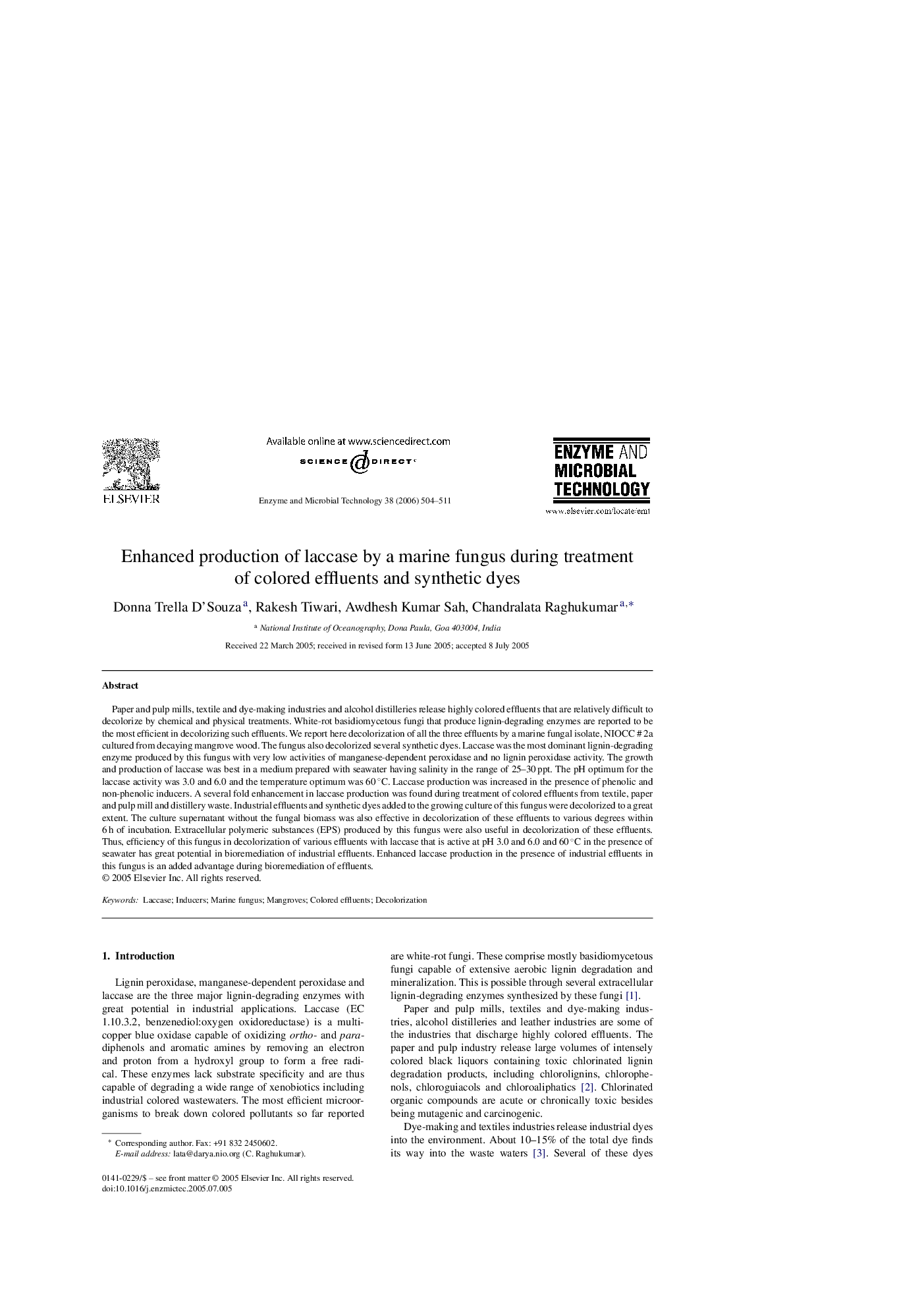| Article ID | Journal | Published Year | Pages | File Type |
|---|---|---|---|---|
| 18795 | Enzyme and Microbial Technology | 2006 | 8 Pages |
Paper and pulp mills, textile and dye-making industries and alcohol distilleries release highly colored effluents that are relatively difficult to decolorize by chemical and physical treatments. White-rot basidiomycetous fungi that produce lignin-degrading enzymes are reported to be the most efficient in decolorizing such effluents. We report here decolorization of all the three effluents by a marine fungal isolate, NIOCC # 2a cultured from decaying mangrove wood. The fungus also decolorized several synthetic dyes. Laccase was the most dominant lignin-degrading enzyme produced by this fungus with very low activities of manganese-dependent peroxidase and no lignin peroxidase activity. The growth and production of laccase was best in a medium prepared with seawater having salinity in the range of 25–30 ppt. The pH optimum for the laccase activity was 3.0 and 6.0 and the temperature optimum was 60 °C. Laccase production was increased in the presence of phenolic and non-phenolic inducers. A several fold enhancement in laccase production was found during treatment of colored effluents from textile, paper and pulp mill and distillery waste. Industrial effluents and synthetic dyes added to the growing culture of this fungus were decolorized to a great extent. The culture supernatant without the fungal biomass was also effective in decolorization of these effluents to various degrees within 6 h of incubation. Extracellular polymeric substances (EPS) produced by this fungus were also useful in decolorization of these effluents. Thus, efficiency of this fungus in decolorization of various effluents with laccase that is active at pH 3.0 and 6.0 and 60 °C in the presence of seawater has great potential in bioremediation of industrial effluents. Enhanced laccase production in the presence of industrial effluents in this fungus is an added advantage during bioremediation of effluents.
